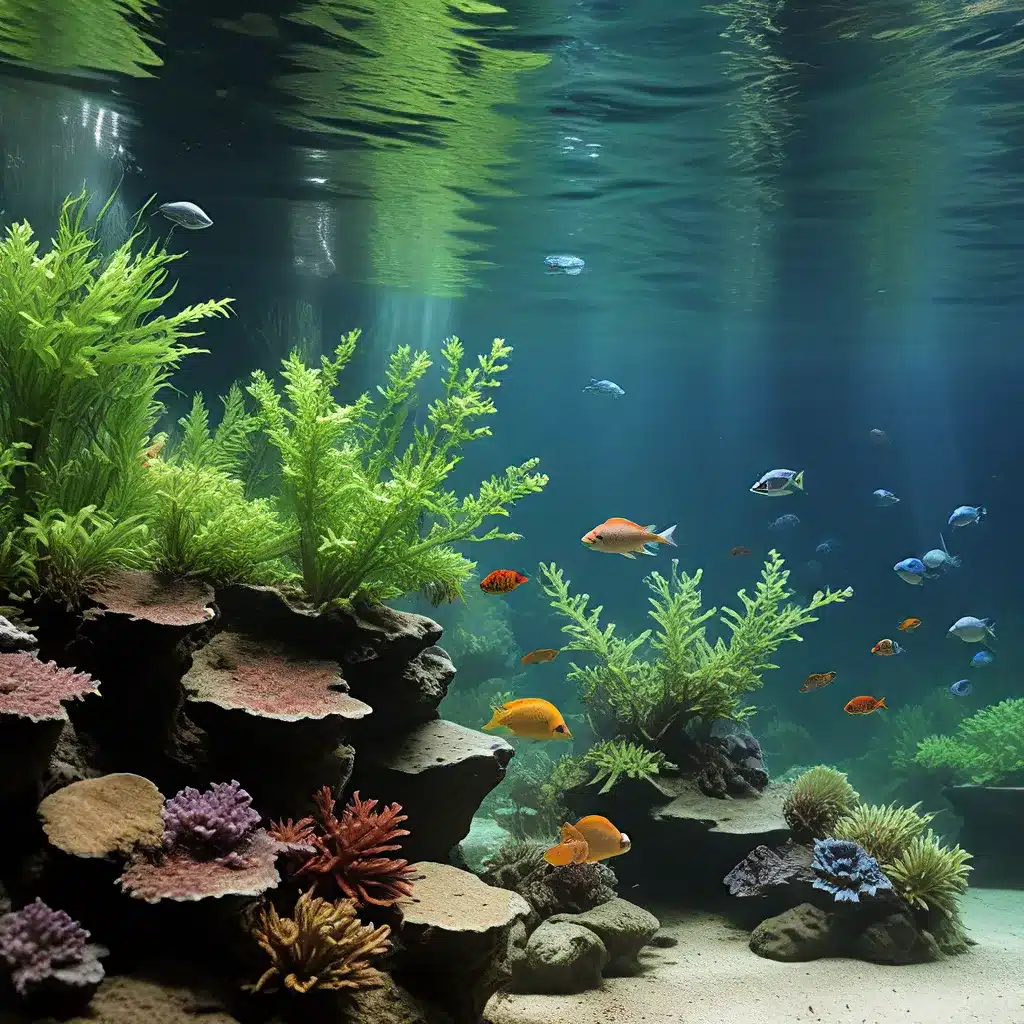
Understanding the Nitrogen Cycle and New Tank Syndrome
Embarking on the journey of setting up a new aquarium is an exciting endeavor, but it comes with its fair share of challenges. One such challenge that many aquarists encounter is known as new tank syndrome. This phenomenon is characterized by elevated levels of ammonia and nitrite, which can pose serious health risks to fish and other aquatic inhabitants.
New tank syndrome arises due to the absence or insufficient levels of beneficial bacteria necessary for biological filtration. Introducing too many fish into a new aquarium can overwhelm the fledgling biological filtration system, resulting in increased ammonia and nitrite levels. Overstocking exacerbates the cycling process and prolongs the onset of new tank syndrome. Excessive feeding can also contribute to elevated ammonia levels in the aquarium, as uneaten food decomposes and burdens the biological filtration system.
Aquarium Keeping provides a comprehensive guide on understanding and managing new tank syndrome. They emphasize the importance of gradually introducing fish, supplementing the aquarium with beneficial bacteria products, and maintaining optimal water quality parameters to ensure a smooth transition for the aquarium ecosystem.
The Role of Substrate in Planted Aquariums
The aquascape substrate plays a pivotal role in the success of any planted aquarium, acting as the foundation upon which vibrant underwater landscapes are built. Selecting the appropriate substrate for planted tank setups is crucial for both aesthetic appeal and the health of the aquatic ecosystem.
CO2Art delves into the complexities of choosing the best aquascape soil and substrate, highlighting the unique needs of aquatic plants and the specific conditions of the aquarium. The choice between an inert aquascaping substrate and a nutrient-rich option can have significant implications for plant health and water quality.
Nutrient-rich substrates, such as ADA Aqua Soil or Seachem Flourite, provide essential minerals and compounds that support vigorous plant growth, creating a lush, healthy aquascape. Inert substrates, like gravel or sand, may be preferred for their aesthetic qualities, but require the addition of external nutrients to support plant life.
Strategically layering different substrates can further optimize plant growth and tank health, mimicking natural soil conditions and promoting robust root systems. This approach not only aids in the aesthetic arrangement of the planted tank but also ensures that plants receive a balanced supply of essential nutrients.
Balancing Water Parameters for Aquatic Plant Thriving
The interaction between CO2 supplementation and aquarium substrate plays a pivotal role in the growth and health of aquarium plants in a planted tank. CO2 enrichment can enhance plant growth rates and improve overall health, making nutrient uptake from the substrate more efficient.
Active substrates, such as ADA Aqua Soil or Seachem Flourite, often contain nutrient-rich components that are more readily available to plants in the presence of adequate CO2 levels. This synergy between CO2 and substrate encourages robust root systems and vibrant foliage in aquatic plants.
Moreover, CO2 supplementation can influence water chemistry, including water hardness and pH levels, which in turn affects the substrate’s efficacy. Aquarists utilizing CO2 in their planted tanks must consider these interactions to maintain balanced water parameters conducive to both fish and plant health.
Selecting the right aquarium substrate for specific plant types is also crucial for the success of a planted aquarium. Rooted plants, such as sword plants and stem plants, thrive in nutrient-rich substrates that provide a solid foundation and ample nutrition through their root systems. Conversely, aquarium plants that primarily feed from the water column, such as floating plants and some stem plants, may not require a nutrient-rich substrate but still benefit from a well-chosen substrate that supports overall tank health and water chemistry.
Maintaining a Thriving Aquarium Ecosystem
Proper substrate depth is essential for the health and development of plant root systems. A substrate depth of 2 to 3 inches is generally considered ideal, providing ample space for roots while preventing the formation of anaerobic zones that could harm plant health.
Incorporating root tabs into deeper substrate layers can help ensure that plants receive a consistent supply of nutrients, especially in tanks with inert substrates like aquarium gravel or sand, where natural nutrient content may be lacking.
Maintaining the health of the substrate in a planted aquarium is crucial for sustaining vibrant plant life and ensuring optimal water chemistry. Techniques such as gently stirring the substrate during water changes can prevent compaction and promote healthy gas exchange, which is beneficial for plant roots and beneficial bacteria.
Aquarium enthusiasts can also explore the creation of DIY substrate mixes, allowing them to customize their planted tank environments to meet specific plant and water chemistry requirements. By combining various substrates, such as aqua soil, clay-based materials, crushed coral, and even unconventional options like kitty litter, hobbyists can engineer a nutrient-rich foundation tailored to their aquarium plants’ needs.
Conclusion: Embracing the Art and Science of Aquarium Maintenance
Navigating the complexities of aquarium water parameter management, substrate selection, and nutrient balancing is essential for establishing and maintaining a thriving planted tank ecosystem. By understanding the interplay between water chemistry, plant requirements, and substrate dynamics, aquarists can create immersive, dynamic environments that captivate and soothe observers.
Whether through the use of active substrates, strategic substrate layering, or the application of substrate additives and root tabs, aquarists can optimize the foundation of their planted tank, leading to lush, healthy aquariums that provide joy and tranquility. Embrace the journey of discovery in substrate selection and usage as a key element of successful planted tank aquascaping, and unlock the full potential of your underwater oasis.
For more information and guidance on aquarium care and aquascaping, be sure to explore the resources available at King Aquarium, your trusted source for all things aquatic.

